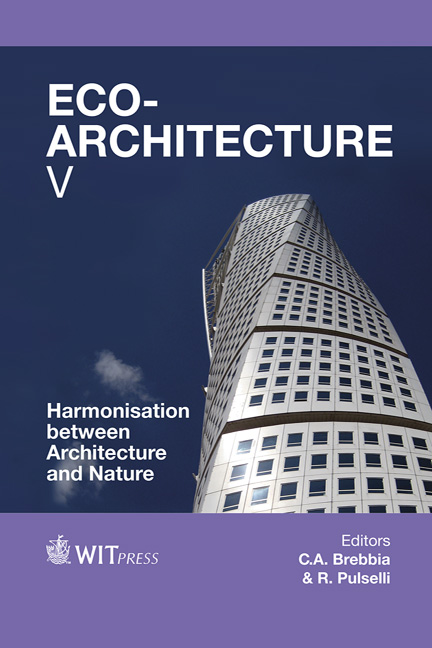A New Approach To The Design And Construction Of The Nearly-zero-energy Building In Sardinia
Price
Free (open access)
Transaction
Volume
142
Pages
12
Page Range
361 - 372
Published
2014
Size
1,177 kb
Paper DOI
10.2495/ARC140311
Copyright
WIT Press
Author(s)
M. Basciu
Abstract
International commitments have led the EU to the adoption of increasingly strict regulations on the reduction of energy consumptions: currently, the benchmark for quality construction is the nearly-zero-energy building. Consequently, Italian governments have implemented a continuous regulatory update. This radical change, in the Sardinian context, traditionally characterized by low sensitivity to these issues, has substantially modified the constructions market. The professionals in the construction field have developed a new attention to energy efficiency, but the current objectives require additional investments in innovation. A holistic approach to the design and construction of buildings that implies a general renewal, is therefore essential. Designers and contractors will have to be able to provide a quality product at competitive prices and the building characteristics will not have to result from the adaptation of models developed in other cultures and climates, but from the local industry experience and from the local research. The improvement of the product will encourage cultural growth of building industries and will enhance public information triggering a virtuous circle that stimulates the diffusion of energy-saving culture. In collaboration with the network of Sardinian companies “Domu Noa”, research about the issues affecting the design and construction of efficient buildings is being developed. In particular, the aim of this paper is the analysis of the construction systems used by “Domu Noa”, the identification of the criticalities of these systems and the definition of constructive solutions. The general objective is to compose a document that consists of a set of rules and technical solutions for the design and construction of efficient buildings. Using this tool it could be possible to overcome the traditional way to design, which does not guarantee a constant quality of the products, in order to reach the acquisition of methodological systems for the Sardinian context.
Keywords
energy efficiency, passive design, sustainable buildings, building elements





